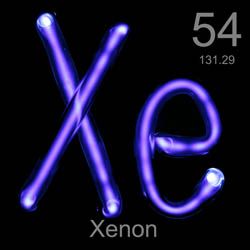An amazing table of the elements


He has just released a breathtaking poster of this device that uses high-resolution photographic images of each of the elements or, in the case of the more fantastical elements at the lower right of the chart, their namesakes.
The poster is available in a number of formats ranging from an art-quality print reproduced on a state-of-the-art MAN Roland press (sorry - a bit of graphic arts geek showing there) using stochastic screening - a high quality dithering approach that is far superior to conventional halftoning - all the way up to a backlit frame assembly that looks like a huge laptop display stuck to the wall. Gray obviously shares a fondness for hi-res printing with co-founder Stephen Wolfram who went to extraordinary lengths to reproduce the cellular automata illustrations in his opus, A New Kind of Science, a few years back.
To illustrate the table, Gray used a number of interesting techniques like the one pictured here for Xenon.
Every element has a pretty side, and in this poster I have tried to give each one a chance to show off what makes it unique and beautiful.
For example the noble gases are represented by discharge tubes that display their characteristic colors in an electric arc. Iodine was photographed while being heated from below to bring out the distinctive and lovely purple vapor it gives off at elevated temperatures. Niobium is represented by an ultra-high purity crystal ribbon, an attractive form that few people have ever seen. Silicon, in contrast, is represented by a relatively low-purity sample, but one that is just plain good-looking.
I'm buying two posters - one for my office and one for my son's high school science classroom.